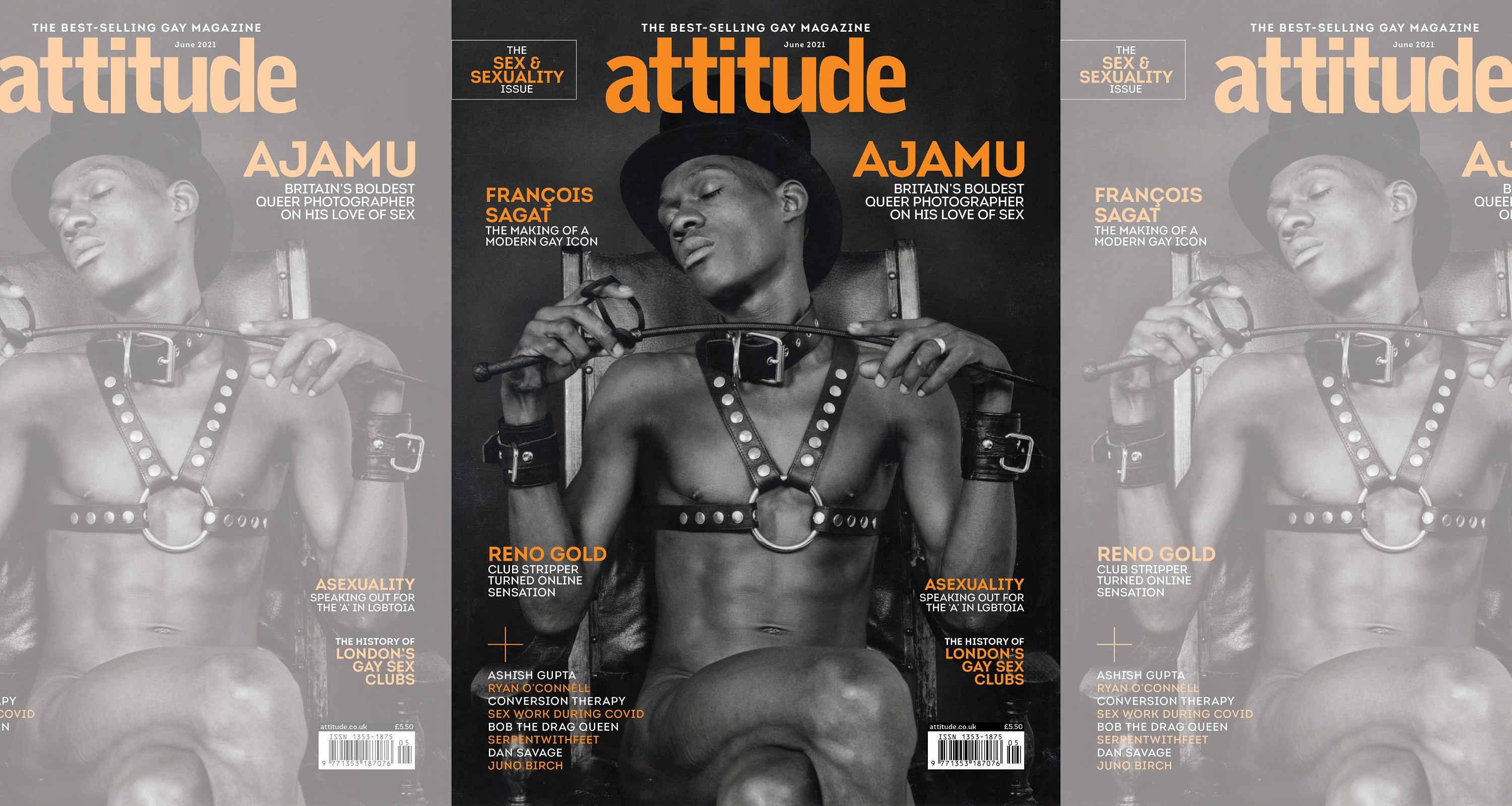Ajamu: ‘Queerness is central to the experience of being Black’
The celebrated artist and activist reflects on three decades of photographing Black queer bodies in the Attitude Sex & Sexuality issue.
By Will Stroude

Words: Paul Mendez (edited by Will Stroude)
The great Black British queer artist, archive curator and sex activist, Ajamu, is as immaculate as ever in a petrol trademark boiler suit, his silvering beard striking against his dark skin as he meets me for the Attitude Sex & Sexuality issue – out now to download and to order globally.
At 58, he’s the ultimate elder: a long-established mentor to and celebrator of Black queer creatives, always responding to the changing environment around him; still sex-positive and a wise guardian of pleasure and queer knowledge.
Born to Jamaican immigrant parents in the Yorkshire town of Huddersfield in 1963, Ajamu has been photographing Black queer lives for more than three decades.
Although he’d come out to his family (whose stoic reaction was “impressively progressive for the times”, as per one interview), he ‘ran away’ to Leeds in 1984, before co-founding the publication BLAC (Black Liberation Activist Core) as a sounding board for his burgeoning racial politics.

Ajamu reflects on three decades of photographing Black queer bodies in the Attitude Sex & Sexuality issue, out now (Photography: Ajamu)
Moving to London in ’88, he soon grew close to “the first openly gay Black queer photographer” who Ajamu refers to as “Timi”.
“I would shoot some work and then show him, and he was very open and welcoming,” he says. “He had his studio and all this light; books on surrealism, Yoruba culture, Renaissance paintings. Through him, I joined the Brixton Artists’ Collective.”
Ajamu’s process and practice quickly came together as he witnessed, and became part of, Black queer history being made.
In 1990, he showed work for the first time, in an exhibition that included the famous piece Bodybuilder with Bra, a synecdoche of Ajamu’s aesthetic/politic: the beautiful, sensual Black male body cloaked in a sense of humour.

Self-portrait, 1993
Photography prioritises the eye above other senses. Western philosophy has gone so far as to racialise the senses, holding sight and hearing as indicative of rationality and whiteness, leaving smell, touch and taste among the more physical and emotional traits thus ascribed to blackness.
“Bataille talks about making the rational shit and vomit,” Ajamu says. “I’m interested in, then, what you might call the ‘lower’ senses: touch, smell, taste. Historically, Black bodies have been associated with these lower senses.
“Smell is also gendered: sweet is feminine; musty, earthy smells are masculine. Your ‘good smells’ are associated with the church. But touch and smell are key to the making process.”

Lovers, 2015
So much of the discourse around Black masculinity, if we single out the past 12 months, has centred around the toxic fruits of structural and institutional racism.
I agree with Ajamu unreservedly when he reminds me, while plucking down an anthology of queer Caribbean writing to show me from his (non-lending) library, that “queerness is central to”, not an outlier of, “the experience of being Black.”
He continues: “My frustration is that we are always framed around resilience, refusal, resistance. We need to never lose sight of what is done to Black bodies, but we should never lose sight of what it is that we want to have done with or through our own Black bodies.
“That’s where my work and ideas come in.”
Read the full interview in the Attitude Sex & Sexuality issue, out now.
Guarantee your François Sagat or Reno Gold cover in print by subscribing here using either code FRANCOIS or RENO.
Subscribe digitally to the Attitude mobile and tablet edition for just over £1 per issue (limited time only).

